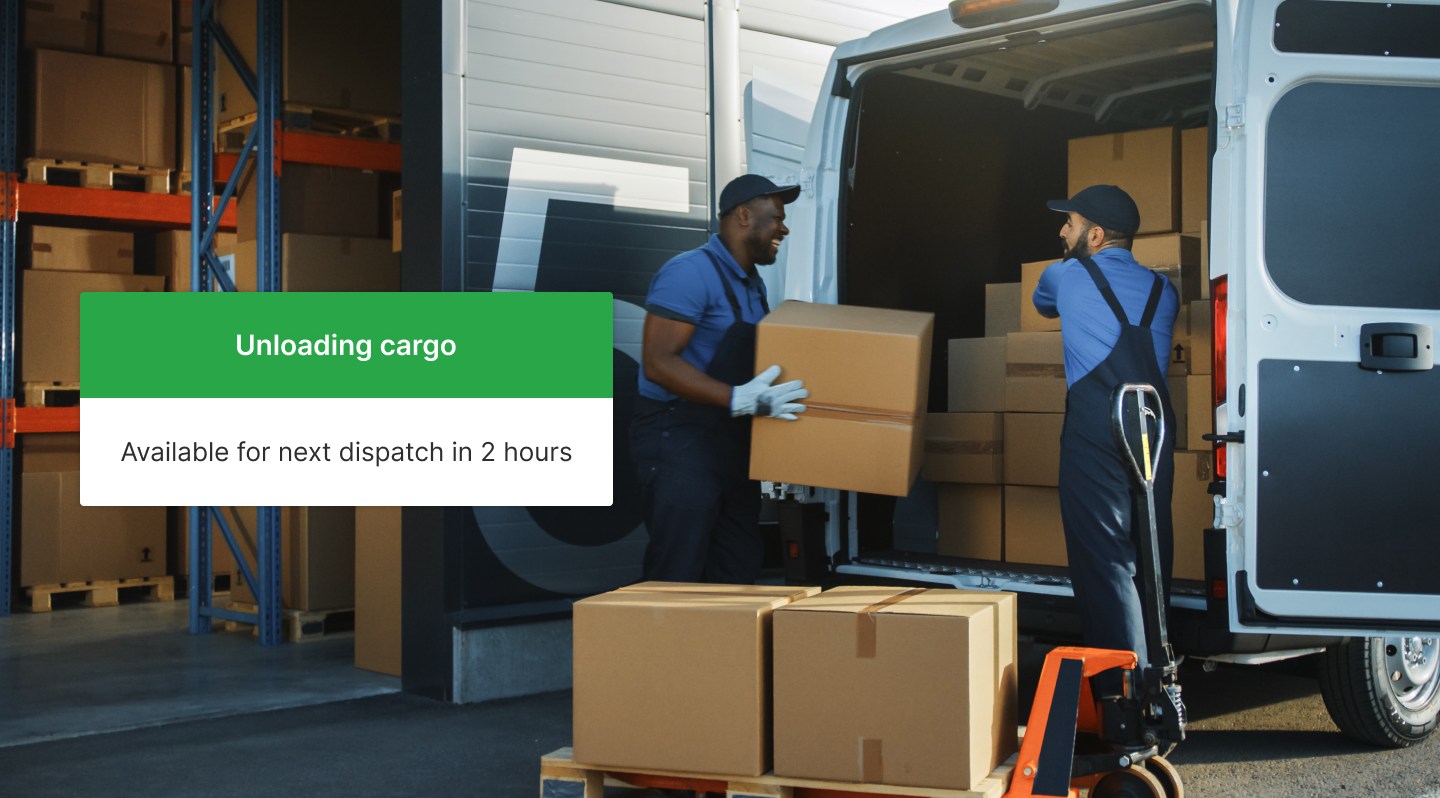Efficiency is top of mind for every truck driver and fleet manager. Inefficiency means losing time, fuel, and money. No one wants that. Projected time of availability (PTA) is a key factor to consider. Increase your efficiency by understanding and improving your PTA.
What does PTA stand for in trucking and logistics?
What does PTA mean in trucking and logistics? PTA stands for projected time of availability.
What PTA means to in trucking
PTA helps the truck driver anticipate when they’ll be available for another contract or shipment. Since drivers make their money transporting cargo, they want to keep their vehicles on the road as much as possible. But they need to rely on others to load and unload the cargo, and that can add time too.
What PTA means to fleets
Many factors play into PTA trucking considerations. Here’s an example. A fleet manager is moving many drivers around a map with different cargos. The fleet manager needs to plan around each customer’s pickup and drop-off times. Filling a truck at 10 a.m. with a load that can’t be delivered until 3 p.m. means the PTA is after 3 p.m. It doesn’t matter to PTA if the destination is 30 minutes away or three hours. But that difference makes a big impact on the business’s bottom line. And the drivers’ frustration levels with dispatch.
How to improve your PTA
Better manage PTA logistics with the following strategies to keep everyone working with up-to-date information.
Calculate Hours of Service
Hours of Service (HOS) are regulated by The Federal Motor Carrier Safety Administration (FMCSA). These regulations limit the number of hours commercial drivers may drive and work per day and week and require mandatory breaks too. When estimating PTA the driver also needs to include breaks or sleeper times. For example, the 30-minute break requires drivers to take a consecutive 30-minute break if eight hours have passed. They can perform non-driving tasks without taking a break, but not drive again until the break is taken.
Keeping track of HOS is easier with electronic logging devices.
Use GPS for route optimizations
Using GPS tracking for route optimization helps drivers carefully plan to avoid wasted time. GPS-based route optimization saves you from spending large periods of time manually calculating and inputting routes between stops.
The driver can easily select a route with an open, empty truck stops along the way to ensure a break. They can also move to shorter routes or those with less traffic congestion to get to their destination faster.
Fleet managers can input various addresses to deliver to, whether one day or across an extended period. They can also use advanced algorithms to accurately decide the most time-efficient routes. Dynamic routing makes PTA planning more adaptable with the power and accuracy of machine learning.
Want to know more about truck route planning? Check out our route planning tips for drivers and fleets.
Invest in vehicle diagnostics technology
Adverse weather conditions such as heavy rain or high heat can risk an overheated engine or other damages to a vehicle, which will lengthen the drivers’ PTA. These conditions can be unexpected. But with vehicle diagnostics technology, the driver and fleet management can better anticipate maintenance issues.
A proactive approach to maintenance can increase vehicle uptime and reduce repair costs. An unsafe vehicle is also a driver and road safety risk. With a robust fleet management solution, you can keep track of vehicle inspection history in the same place as your in-vehicle diagnostics. Providing both drivers and fleet managers with visibility into vehicle health so they can address problem areas early.
Get insights into warehouses and facilities
A driver dispatch software can help fleet managers message drivers on the route to share info about warehouses and facilities. Fleet managers can make driver workflow simpler with details right in the dispatch about load information, addresses, pick up windows, and any special instructions. If details change, drivers can be updated via instant messaging in the software to avoid PTA calculation problems.
Be aware of aspects that might lengthen your PTA
Late arrival at a destination due to weather conditions or a traffic jam can negatively impact PTA. Poor communication can also lengthen PTA as a driver could arrive to pick up or drop off when no one is available at the customer’s location. If you do run into an obstacle on a route, follow up with dispatch about your changing availability so they can plan around it.
What is the difference between ETA and PTA?
There can be some confusion about the difference between ETA and PTA. PTA means projected time of availability, and ETA means estimated time of arrival. To put it in clear terms, ETA is when you expect to arrive at your destination. PTA is when you’ll be available to take on your next job.
Drivers could arrive at their final destination 12 hours before they’re available again. That’s a critical distinction. After all, if a driver arrives at 7 p.m. to the customer’s location but can’t unload the cargo until 7 a.m., they won’t be available until that’s done.
How Motive helps with PTA in trucking
Motive has solutions for all your fleet management needs. From easy-to-use ELDs, GPS tracking for route optimization, and maintenance reporting to destination insights — all in one place.
Improve PTA logistics with reliable, accurate software that keeps drivers compliant, reduces the risks of drivers getting lost, and helps you keep your fleet in top condition. Customers will receive their shipments on time and you’ll enjoy streamlined processes too.
Motive’s fleet management software targets efficiency to help commercial fleets of all types and sizes become better, smarter, and more effective. Request a free demo today to learn more.










